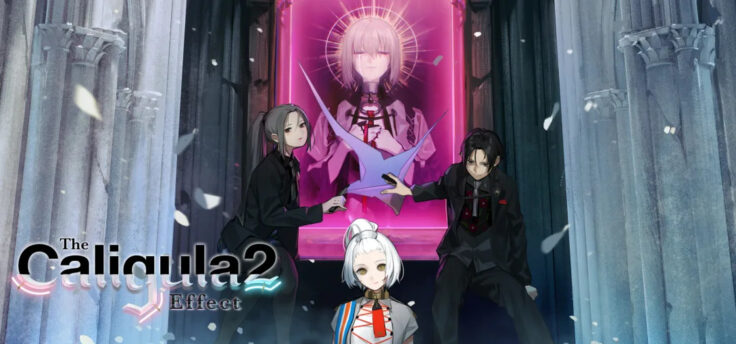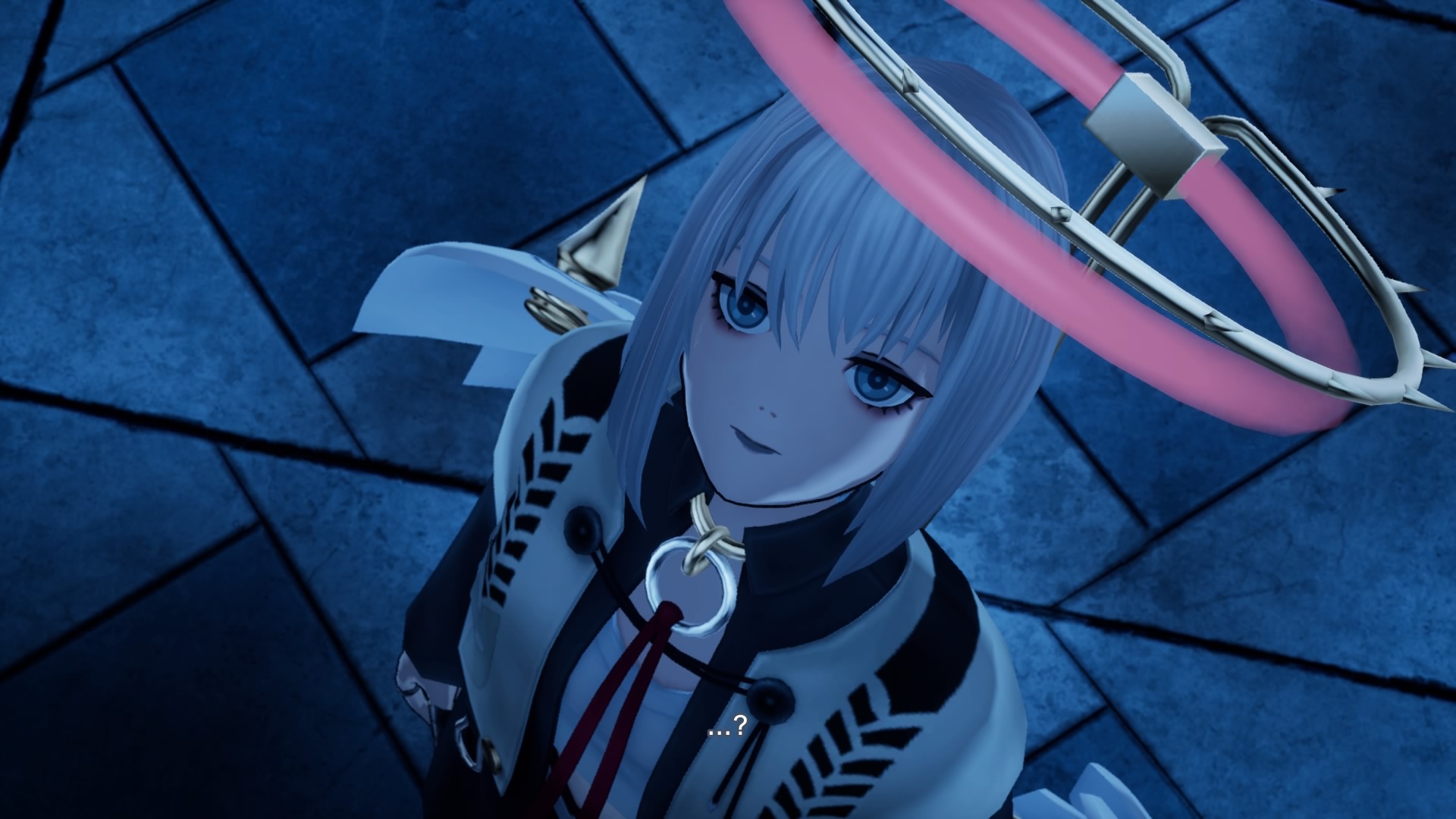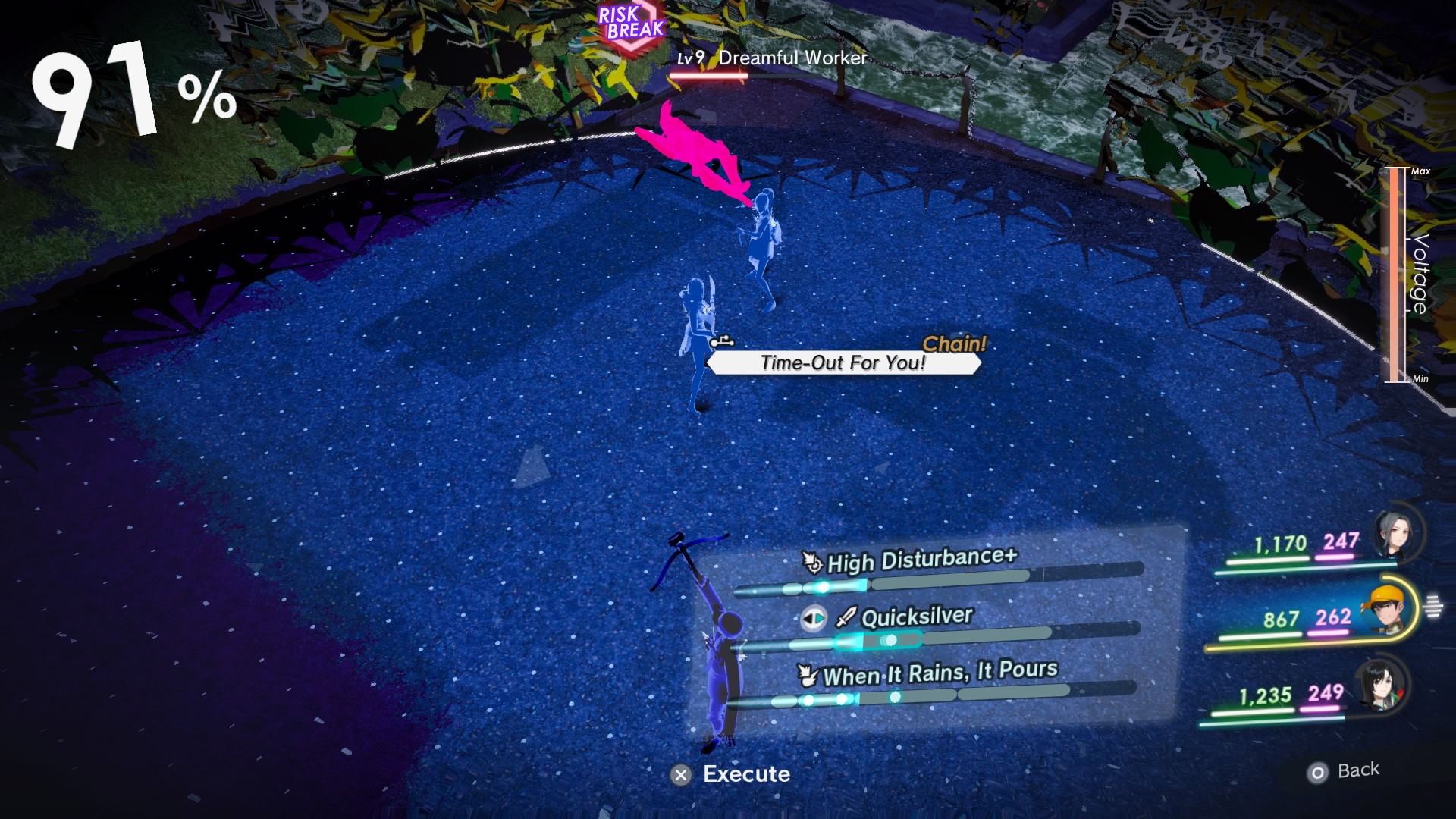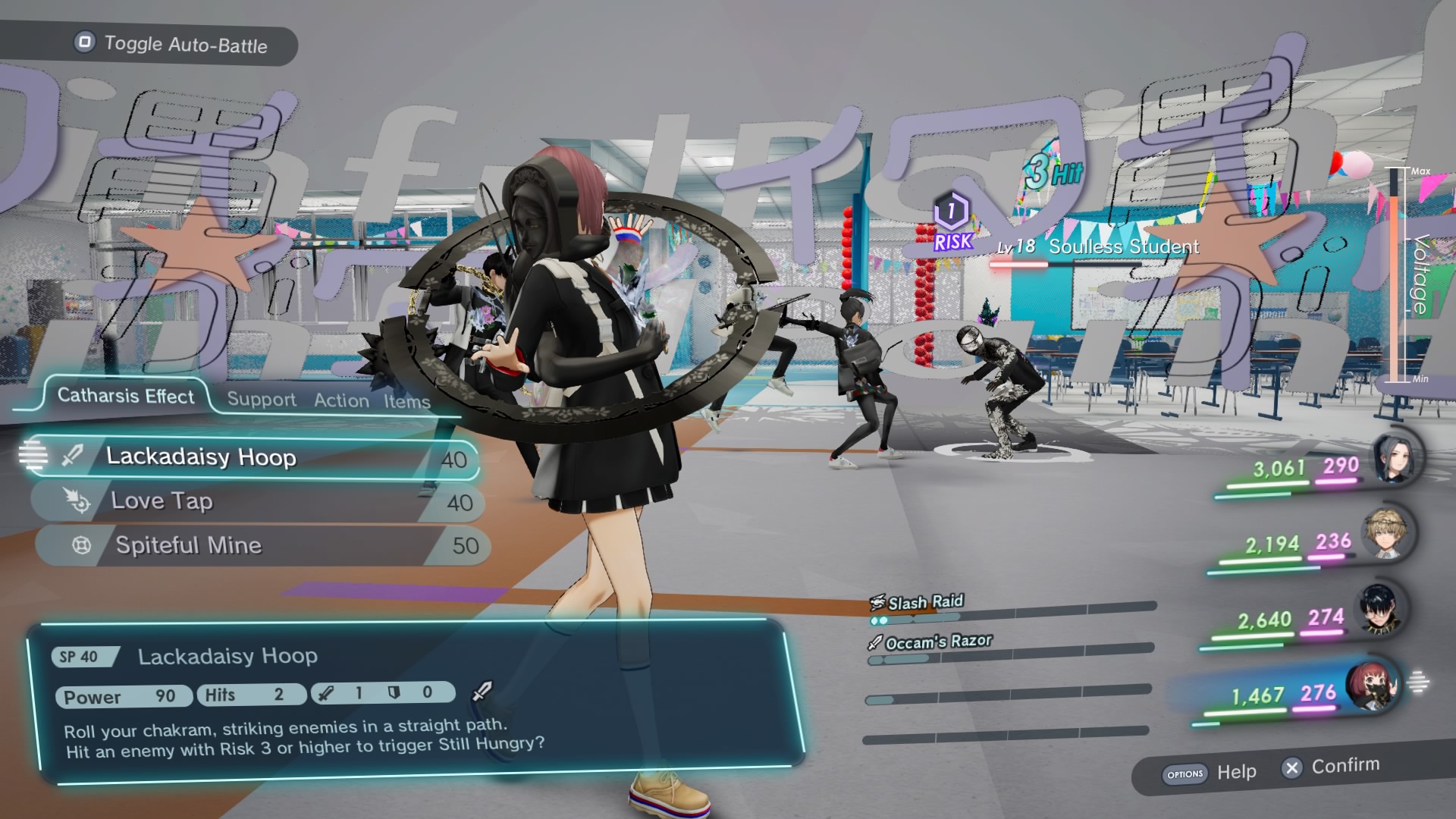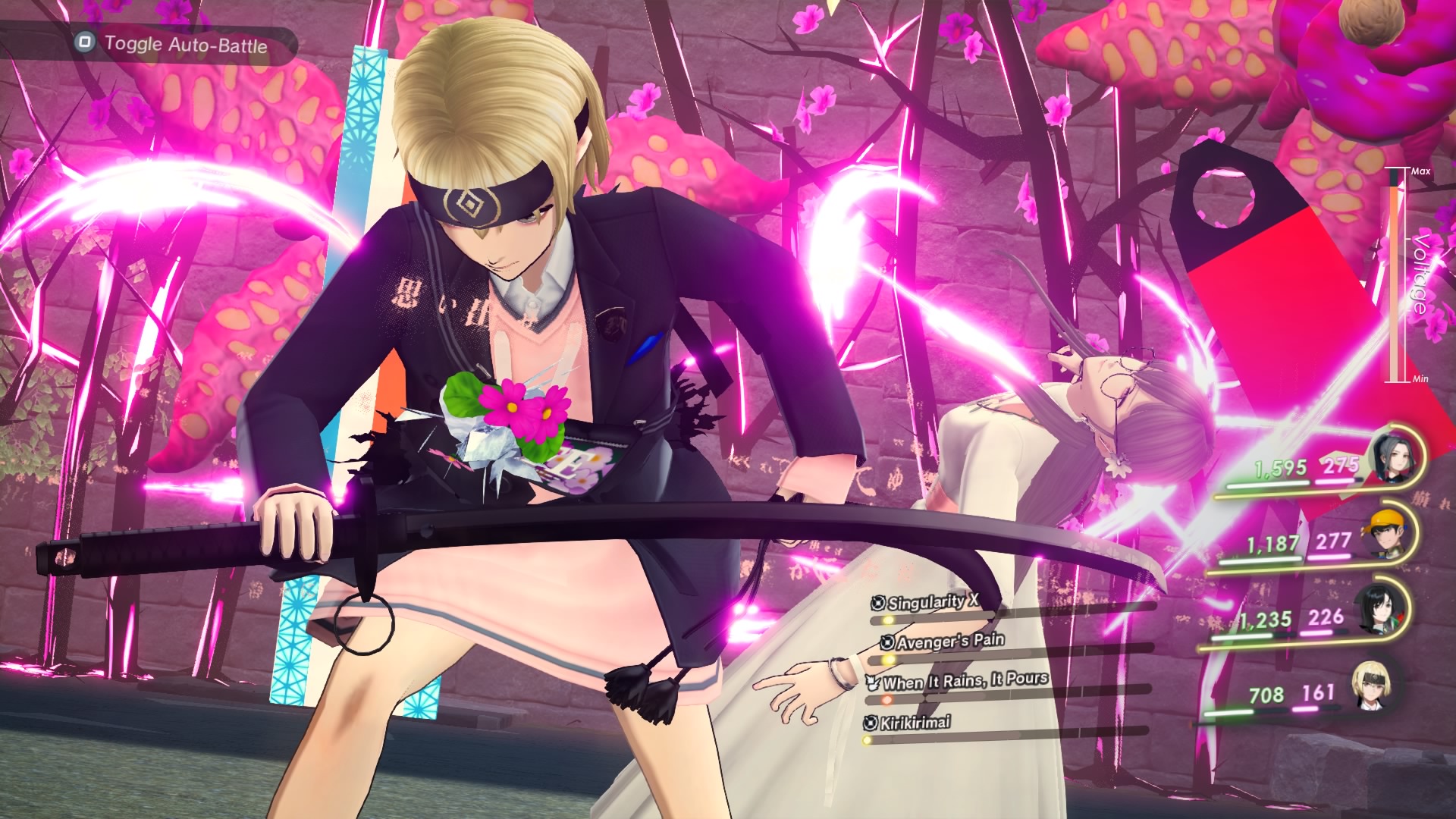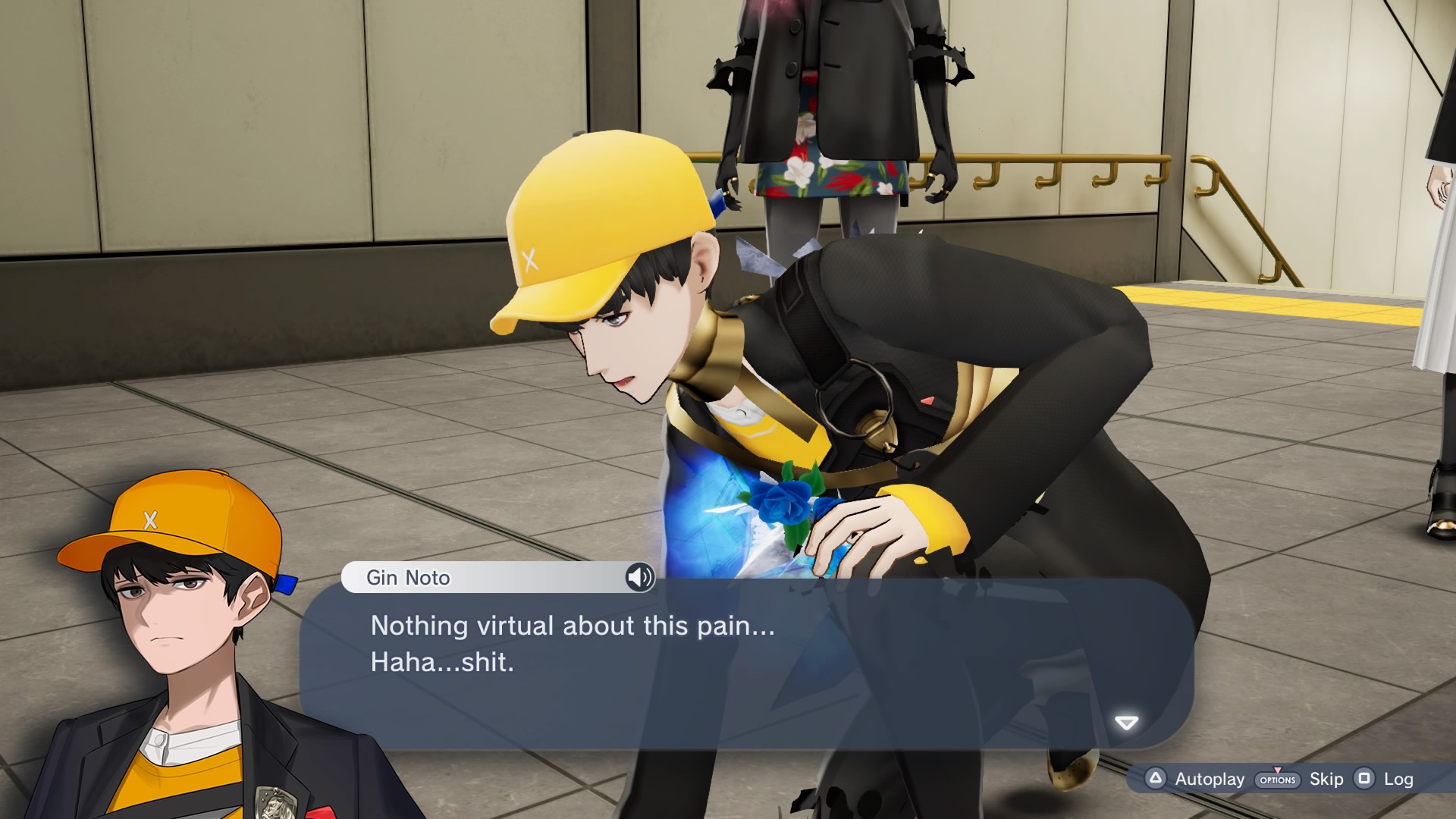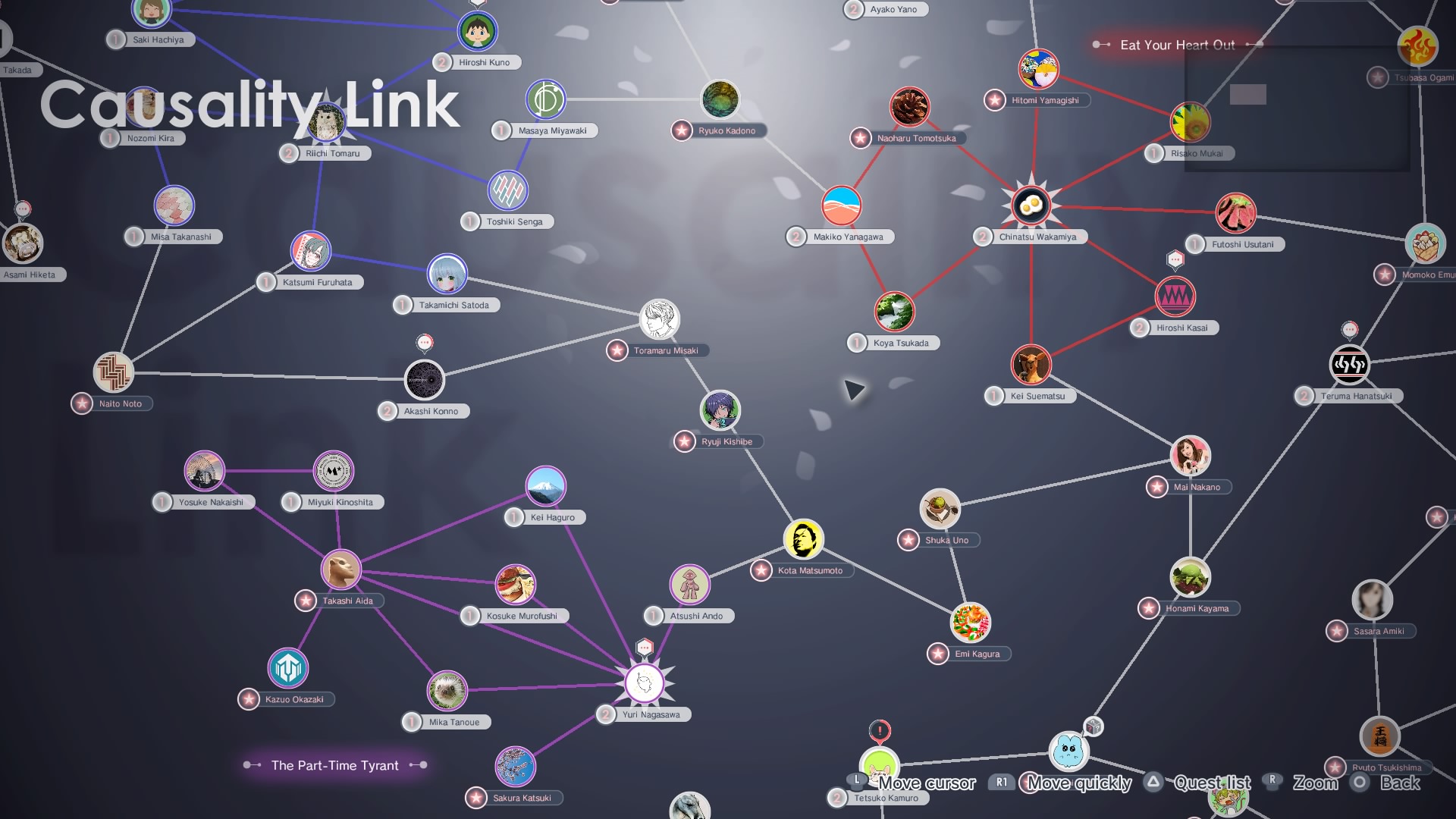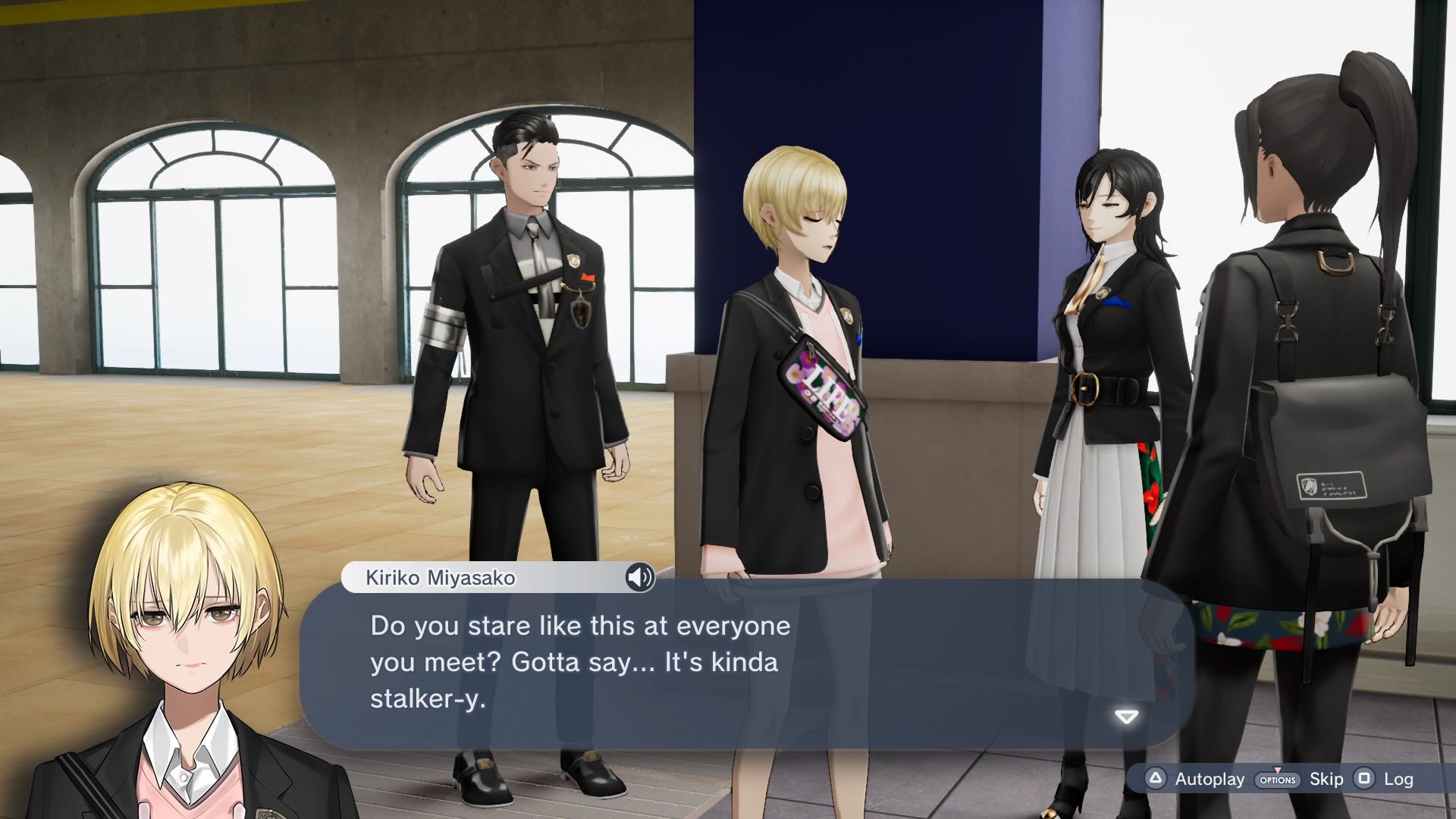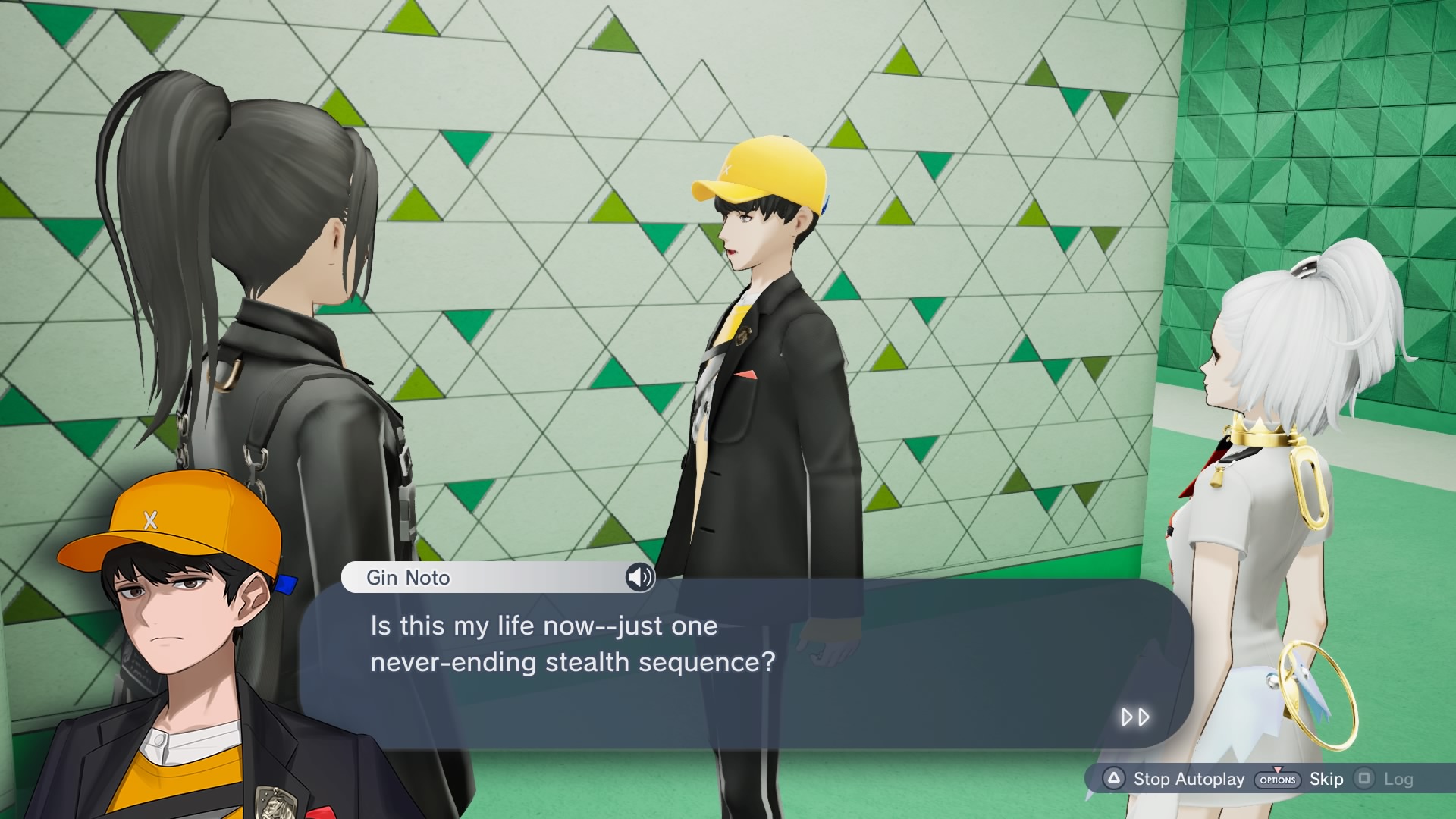I don’t think Redo is all that perfect, there’s still tests here.
Type: Single Player
Genre: JRPG
Developer: FURYU Corporation
Publisher: NIS America Inc.
Release date: October 19, 2021


To be honest, I never could get into Caligula Effect: Overdose. I wanted to, but I could never get that far in before I stopped and had no desire to return. I heard great things about the story, but it was just the combat. It may be because it isn’t explained that well, or because I grabbed the Switch port (which I found out later was a huge mistake), but the combat just didn’t click with me and I was so confused. Even after watching an official combat guide I was still confused when I tried to apply the tips myself. So I dropped it. I tried getting back into it when Caligula Effect 2 was announced, but then I dropped it again. Of course, it’s obvious I checked out the sequel despite that, which part of me hoped that the combat got improved on while simultaneously dreading the combat. Oh and worrying if this is the type of sequel you have to play the previous game(s) to understand what’s going on.
Luckily enough for those of us that either didn’t pick up the first game or couldn’t get into it mainly due to the combat, you don’t have to play the first to get into the second. While Caligula Effect 2 does canonically takes place five years later and there are a few references, you can go in and still understand the story. We’ll be missing the callbacks and why they’re important, but it does get a quick explanation and the majority of the characters have no idea either so it’s not like you get this outsider feeling when the past game’s events come up.
After picking out your character and getting a little meeting with a new VirtuaDoll named Regret, you’re put into a Metaverse-Es world dubbed as Redo. After hearing one of Regret’s songs, you were pulled in due to having a deep regret and Redo is supposed to free you from it by having you forget your life before Redo. And you lived here, living out an ideal high school life (except tests… they didn’t get rid of tests). That is until something strange breaks into Redo, causing things to glitch out. This is turn causes you to have a weird ass dream and your vision to glitch out (though the glitch involving people isn’t as scary here). You decide to go home to sleep this off, but upon boarding a train, which in retrospect looked too colorful to be the regular train, that mysterious something latches onto you. You soon learn that it was X (or Chi) that broke into Redo and she’s a VirtuaDoll too. X views Regret as an impostor and aims to take down Regret and Redo, mainly because the situation of Redo mimics what happened years earlier with Mobius (from the first game) and μ (Mu) and Aria are being blamed. However even if you didn’t want to team up with X, she lowkey hijacks half of your body so if she goes down, you do too. So you, X, and some other people that have realized that Redo is not the real world forms the second generation of the Go-Home Club (though not everyone is on board of going home at first) to fight the Obbligato Musicians and Regret. And along the way, you can choose to become closer to your fellow teammates and learn their regret and why they were pulled into Redo.
Though, I was a bit disappointed that you couldn’t join the Musicians like I heard you could in the first. Especially since it’s one of the aspects that everyone talks about when recommending it. Though considering the story, it might not have fit in that well as X does shove herself into your body. She mentions early on that she can take control of your body for a couple seconds and I can imagine that it upgraded as she got more power with each Musician defeated. Also, lets just say that the Obbligato Musicians aren’t that close as it would seem.
A big part of Caligula Effect is the music, as VirtuaDolls are virtual idols and the Musicians are their song writers, as playing the Musicians songs will turn them into Digiheads (though there are some Puppetheads here that the Musicians forced their control over). While you’re going through the dungeon areas, they’ll be populating the various areas and they’ll go after you once you go into their line of vision or until you do a sneak attack on them. And this gets us into the combat. Like I mentioned before, the combat was the reason I couldn’t get into Caligula Effect: Overdose, so I didn’t really know whether or not I would like it here. Well, the combat was looked over and improved and I can say that it was for the better. The combat here is basically in semi-real time rather than the traditional turn based combat. Each character in your active party will be able to do one attack (compared to the three, but don’t worry some attacks will have them doing multiple attacks in reality) and each of them have a cast time and a standby to simulate having turns. But what makes this different? Well, you can actually view what’s going to happen in the future with the help of the Imaginary Chain, including what your enemy will do. This lets you put the move you did in the perfect place (within a limit) so you can hit the enemy when it’s best and dash out of the way or shield against attacks coming your way. This is even more important with the fact that character’s attacks are meant to synergize well with either their own or other’s attacks and some have the possibility of interrupting enemy attacks or even launching them in the air. You’ll even find yourself setting up for future attacks (like poisoning the enemy) or keeping some party members on low health to meet the secondary attack requirement.
There’s also a couple systems to help out in battle as well. There’s Stigmas, which is the equipment system here, which you can equip onto your teammates to increase their base stats or even making certain skills more powerful. While you are limited to four (and there are three different Stigma types), some can be “mastered” which can let you equip it as a passive without actually having it equipped as a Stigma. You also have two bars that build up, which greatly help you out when you activate them. The first is X-Jack, which is one that you should use a lot as the recharges are given out like candy. Once the Voltage charge is built up, you can have X sing to power up your team for a limited time. And you can even increase how powerful this is as you continue the story like making it last longer (which is more for bosses) and decreasing standby time even more; as well as giving you more ways to recharge it during battle. The different song X can sing during this can also give a certain effect like increasing attack or defense. Another, which is one that should be used more sparingly is the Overdose attacks. These can only be used when a character’s stress meter is filled up, which fills up more slowly than Voltage, and will give that character to do a powerful attack or support skill that has a cool animation to go along with it. Both of these help when going up against powerful and/or multiple enemies and definitely when going against the Musicians.
This battle system, while unique, does inherently make the battles here take longer and I can’t really think of any other modifications that can be made to make it much quicker other than tossing it out completely. I’m in the camp that loves it though, Caligula Effect 2 did a great job at improving the combat and making it understandable to the player this time around. For me, while I was totally confused and disliked the combat in the first, the combat here immediately clicked for me and it was really fun. You know how satisfying it is to juggle an enemy (especially keeping them juggled until their death) and to just front flip over them to dodge an attack? Very. I also loved how each character had their own weapon and how they handled themselves in battle. Not to mention how everyone had their own names for their skills that went along with their personality or backstory (my favorite skill names are definitely from Sasara’s and Kobato’s list).
Once you get a ways into it, you will get a good sense on when you could just mindlessly attack (or put it in auto battle mode), like going up against an enemy or two that’s at least a couple levels lower than you. Just have to keep an eye on them and get back into strategy mode when going up against strong enemies/bosses. And in terms on how grindy this is, I wouldn’t really say it is. I played on Normal and while I did go into battle with all the enemies in my path, I didn’t have to go out of my way to grind for hours. If you play your attacks right, you can even defeat enemies that are twice your level (or have 20 levels on you once you get into the later chapters), which I was pretty surprised at. It’ll be a hard fought battle for sure, but who doesn’t like a challenge.
I do wish the game showed you the start of when an enemy’s attack, at least after you see it play out on the imaginary chain. This would have given a bit more speed as it is a bit annoying having to rewatch the Imaginary Chain every time you move your attack to get it placed right. I also would have liked being able to choose who went first, or maybe give one more of a chance to be first, as there are characters that work better going first than others.
Aside from the main story, there is a bunch of side content that you can do. Between each chapter, you get a short of intermission to do whatever before actually going into the next chapter like exploring the areas you unlocked or buying more consumables. But, the main thing is with the NPCs. One of the main complaints I saw about the first game was the 500 recruitable NPCs that I heard was a chore and was barely worth it for the majority of them. Well, I’m sure those that hated it will be happy here. While this does carry over in spirit, though it’s more around 200 NPCs, they’re more towards giving you side quests and not to be recruited. You do have to find them with only a general location to go off of first and they do all fall into essentially being the same quest type as you’ll either need to find/buy an item or talk to a character after equipping a certain stigma. A lot aren’t too interesting, though there are some group quests that put in a story revolving around a group of people that can be interesting. Talking to these NPCs and doing their quests will put them on the Causality Link Chart (which basically is a visualization of who knows who), unlock their Wire profile (which you can view their regret once you complete their questline) the ability to text them, and some rewards like increasing one of your stats and giving you currency (or a lame text topic). Though, at first this is pretty overwhelming as there is seemingly an endless supply of these to do in the beginning.
Nonetheless, I do recommend finding these NPCs (even just to fill out the Causality Link Chart) and doing the quests as you go along if you’re planning to. The first two chapter intermissions will just smack you with a lot of this to do, like “this takes about the same time as the actual main story chapter” a lot, but pushing them to later will just make it worse. I even got a bit burnt out in the first intermission, just imagine doing all of them towards the end.
This is also the time you’ll be able to do the character episodes with your teammates, as it is optional. This is a mix of how far you’re in the story and your affinity level with them, but their episodes will open up to give you more insight on their character and then you’ll eventually get to the point where you can dive deep and learn about their regret. Though some of them aren’t terribly interesting starting out (Marie’s first one is her being surprised you were on time to school, but I did find Shota’s to be funny) or omit some details that could have been a fun read (like what you did with Gin when you ditched class with him). Affinity in itself was pretty easy to max, I maxed all of them before the end of Chapter 6, as it raises when you fight with them in battle. As long as you switch out your characters once they’re maxed, you’ll be alright in this aspect. It certainly helps that each character is a delight to play and synergies well with others once they start learning more moves. I can’t be the only one that suffers from feeling obligated to stick with the same first couple of characters, but everyone worked so well together I had trouble picking out my team once I maxed everyone as they all had their own advantages and I liked them all by the end.
In terms of performance, Caligula Effect 2 does perform well, but there were some frame drops after getting past the first half of the game that seem to happen when loading into a new area. It’s nothing too bad, I never ran into an enemy due to it, but it’s noticeable.
Verdict
Considering that I couldn’t even get into the first Caligula Effect, I didn’t know what to expect other than the possibility that I would be struggling hard with the combat. But when I finally got into it, my fears were forgotten. Compared to my short experience with Overdose (and some information from others that got through it), Caligula Effect 2 made improvements that definitely lifted the experience. The combat keeps the uniqueness it had while making it understandable, more approachable while still having complexity to it, and fun this time around; focused on the core Go-Home Club members than spreading it over 500 other NPCs, and the side quests do take a step in the right direction (though there are till 200 NPCs of the Causality Link Chart). I can’t say whether the story is better here though, but I did enjoy the story and getting to know the characters and their motivations. While it doesn’t do too well in making the starting character stories interesting and the side quests are just the same, I would definitely recommend getting this if you’re looking for another JRPG to play. Both those new and old to Caligula Effect will enjoy this new addition.

